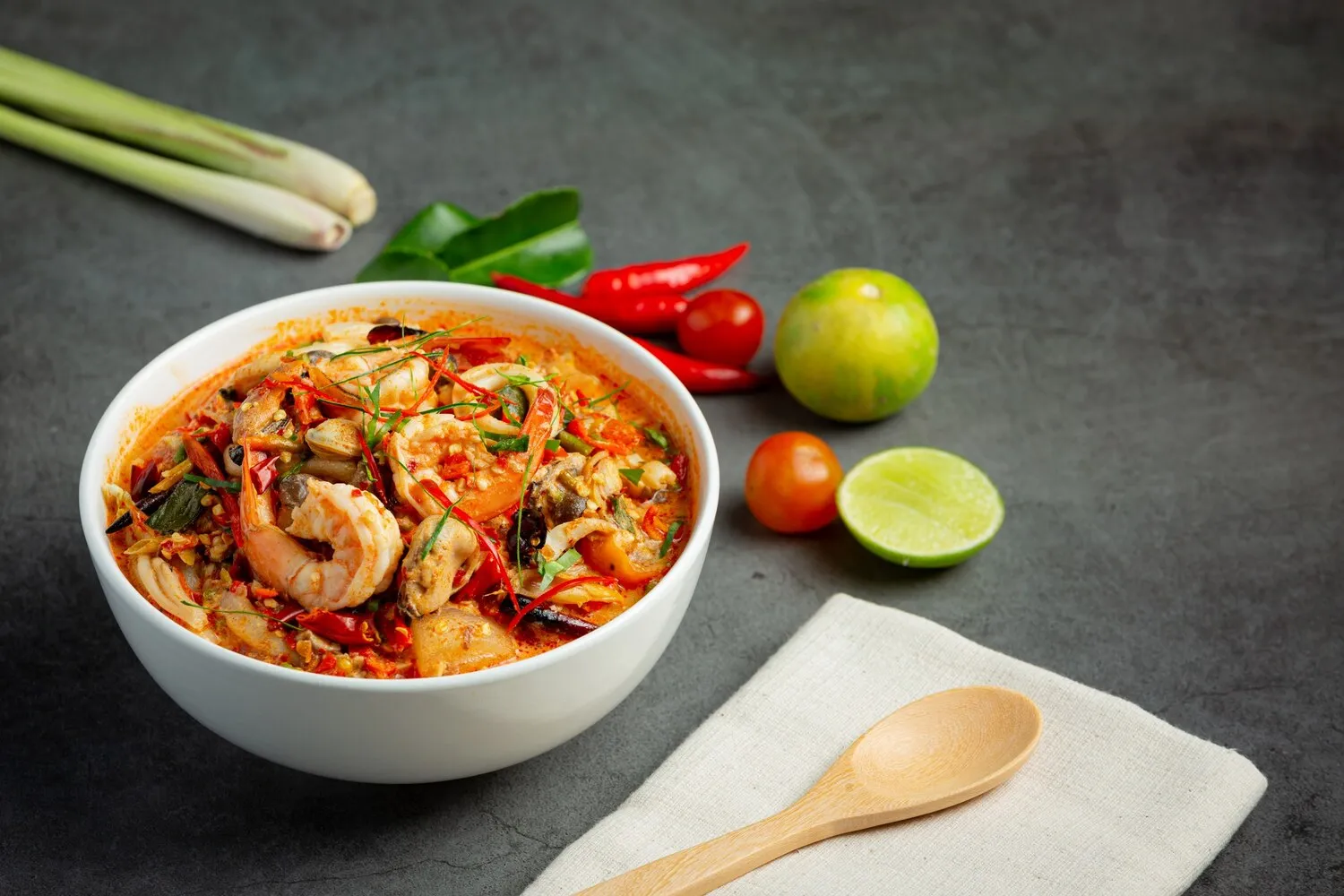
Laksa
A spicy noodle soup popular in the Peranakan cuisine.
Nutrition Facts
* The % Daily Value (DV) tells you how much a nutrient in a serving of food contributes to a daily diet. 2,000 calories a day is used for general nutrition advice.
Laksa's origins are believed to stem from the intermingling of Chinese and Malay cultures in Southeast Asia, particularly in the Straits Settlements. It evolved as a hybrid dish, incorporating Chinese noodles with local spices and Malay cooking techniques. Influences also came from Indian cuisine through the use of spices and coconut milk.
Laksa holds significant cultural importance in Malaysia and Singapore, representing a fusion of cultures and a beloved comfort food. It is often enjoyed during festive occasions and is a staple at hawker centers.
Regional Variations
Different regions boast unique laksa variations, reflecting local ingredients and preferences. For instance, Sarawak Laksa is known for its prawn-based broth and aromatic spices, while Curry Laksa features a stronger curry flavor. Assam Laksa, primarily found in Penang, is sour and fish-based, lacking coconut milk.
Hawker Culture
Laksa is integral to the hawker culture of Malaysia and Singapore, where street food vendors specialize in specific dishes. Each hawker often has their own secret recipe and techniques passed down through generations, contributing to the diversity and quality of laksa found throughout the region.
Culinary Identity
Laksa is considered a national dish in both Malaysia and Singapore, and is featured prominently in culinary tourism. It represents the rich cultural heritage and diverse flavors of the region.
Laksa is a complex and flavorful dish that balances spice, richness, and umami. Key flavors include spicy chilies, creamy coconut milk, tangy tamarind, and fragrant spices.
The dominant flavors are derived from the laksa paste, which typically includes ingredients like chilies, galangal, lemongrass, turmeric, shallots, garlic, and belacan (shrimp paste). These ingredients create a spicy, aromatic, and umami-rich base. The coconut milk broth adds creaminess and sweetness, while ingredients like tamarind or asam (sour fruit) provide a tangy counterpoint. Prawns, cockles, and fish cake contribute seafood flavors, while tofu puffs absorb the flavorful broth. Herbs like Vietnamese mint and laksa leaf add freshness.
Making Laksa Paste
The quality of the laksa paste is crucial to the overall flavor of the dish. It's recommended to make your own paste from scratch using fresh ingredients for the best results. Toasting the spices before grinding can enhance their aroma.
Balancing Flavors
Achieving the right balance of spice, richness, and tanginess is key. Adjust the amount of chilies, coconut milk, and tamarind paste to suit your preferences. Taste and adjust the broth throughout the cooking process.
Ingredient Quality
Use fresh, high-quality ingredients whenever possible. Fresh prawns, cockles, and herbs will significantly enhance the flavor and texture of the laksa.
Noodle Choice
The type of noodle used can impact the overall experience. Thick rice noodles (laksa noodles) are traditionally used, but egg noodles or vermicelli can also be substituted.
Explore additional Soup dishes and restaurants
Explore SoupDiscover top dining spots and culinary experiences in Perth.
Explore PerthLearn more about the food culture, restaurant scene, and culinary heritage of Australia.
Explore Australia